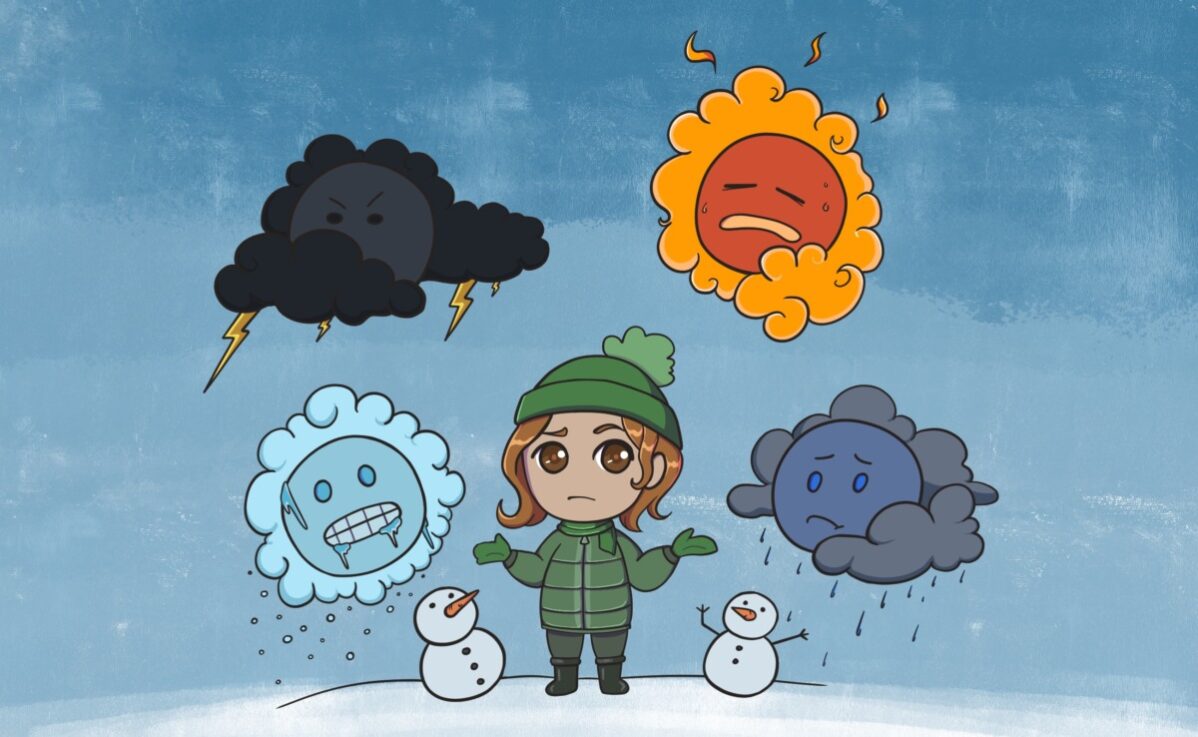Winter in Canada defies brutal expectations and has a gentle start.
Canada, often recognized for its extreme weather conditions, is witnessing a shift in its climate patterns.
The nation is experiencing a warmer overall climate, with a longer fall and a gentler start to winter than usual.
David Phillips, senior climatologist for Environment Canada noted that the past three months have been warmer than usual with up to a three degree increase this October.
“Almost all the three months have had less precipitation than normal. So, we haven’t been inconvenienced by that, we hadn’t had to shovel plow and push any snow that has come other than just a few flurries here and there, we have no snow, really in Toronto sitting on the ground,” Phillips said.
Geoff Coulson, warning preparedness meteorologist at Environment Canada provided a detailed breakdown of temperature averages for the month of December.
He noted that Toronto is experiencing a current daytime high of four degrees and an overnight low of four degrees.
“The models are aligning with a prediction of a milder December, reminiscent of last year’s patterns. Starting with seasonal temperatures, a shift towards milder conditions is anticipated, but there are indications of colder weather returning at Christmas, possibly bringing more snow, corresponding to December 2022,” Coulson added.
Coulson projects that normal highs would be around 1 C with overnight lows dropping to approximately -7 C by mid-December.
Towards the end of the month, normal highs are expected to be around -1 C, accompanied by overnight lows of about -9 C.
This change in the otherwise brutally cold winters in Canada, is an impact of climate change and compounded by land use changes and urbanization.
“The winters are not as bitterly cold as they used to be… so we are affected by climate change,” said Phillips.
“When we alter the surface of the land, we change how the weather interacts with it. Urban areas, with their extensive infrastructure, tend to absorb and retain more heat. This creates localized effects, such as heatwaves and flash floods, which were less common in the past,” David Phillips explained.
One of the critical components in adapting to the evolving climate is the development of climate-resilient infrastructure. David emphasized the importance of updating building codes and constructing structures capable of withstanding the intensifying weather conditions.
“Our infrastructure needs to catch up with the changing climate. Building codes must be revised to ensure that homes and buildings can withstand the new extremes we are facing. The 100-year storm is no longer a rare occurrence, and we need to be prepared,” Phillips remarked.
For students preparing for the winter ahead, Jeff recommended a versatile approach to wardrobe choices.
“Layers are key,” he emphasized. “A sweater under a lighter jacket should suffice for milder days, but be prepared for chillier weather with ski jackets, parkas, winter boots, and other cold-weather gear. Toronto’s weather can be unpredictable, so it’s essential to be ready for a range of conditions.”
With the weather in Canada being “Hit and run” as described by Phillips, people should be well prepared for the sudden changes in the weather and keep themselves ready. However, a warmer start to winter lies ahead.


